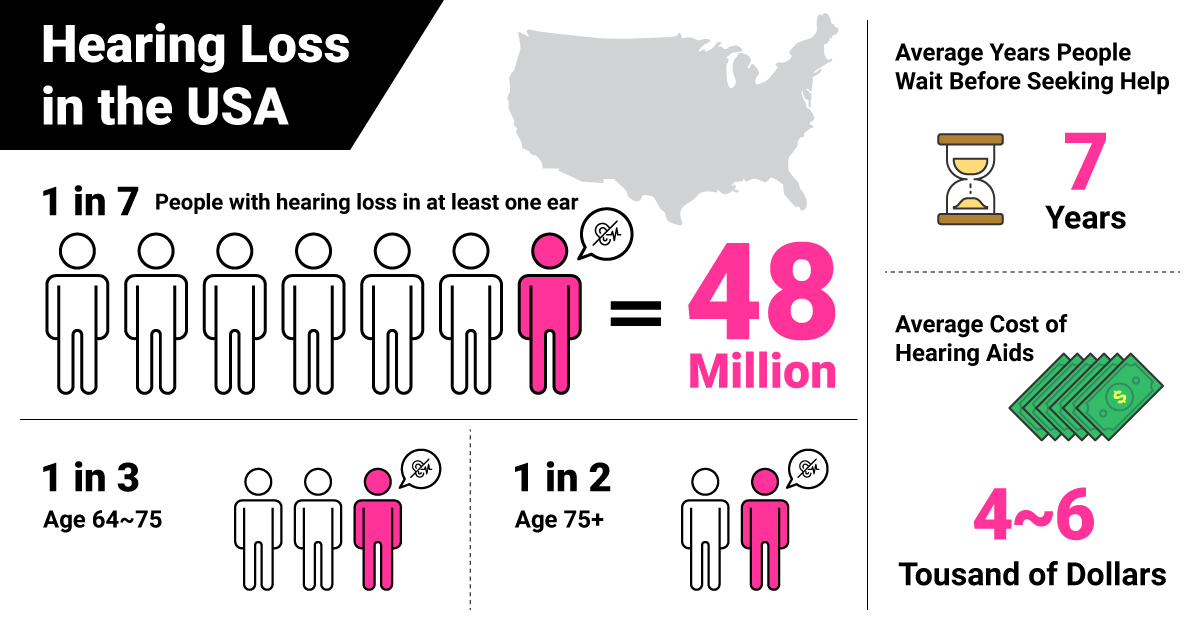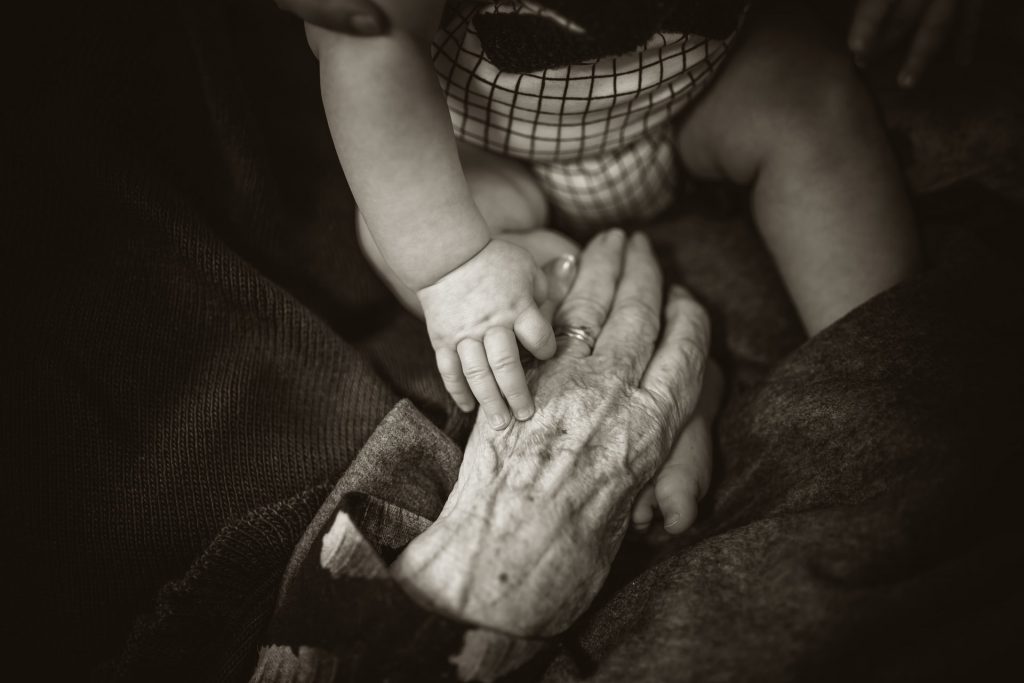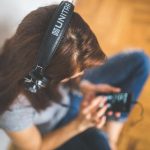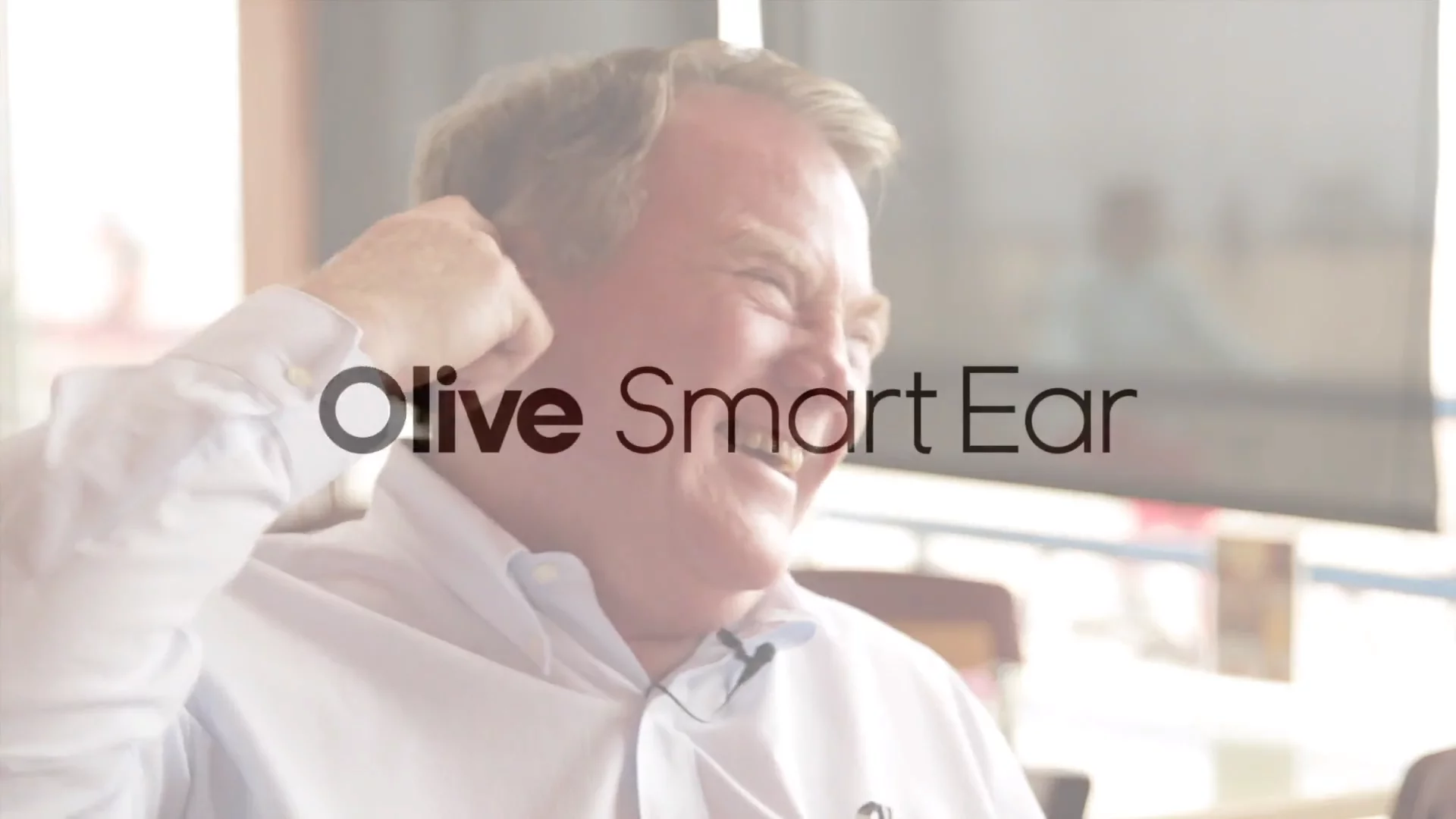
When one thinks of common conditions, hearing loss is most likely not the first to come to mind. The truth, however, is that hearing loss is a very common condition! Here are some US hearing loss statistics to illustrate the extent and effect of hearing loss in the United States.
Contents
Key Hearing Loss Statistics in the US
Globally, hearing loss is a very common condition, and the U.S. is no exception. 1 in 8 people in the United States (13% or 30 million) aged 12 years or older has hearing loss in both ears, based on standard hearing examinations. When expanded to hearing loss in at least one ear, that figure becomes 1 in 7 – or 48 million!
Age is a strong indicator of hearing loss as well, with 1 in 3 people between the ages of 65 and 74 having hearing loss. That number further increases to nearly 1/2 when considering those above the age of 75.
Sensorineural hearing loss (SNHL) is the most common form of hearing loss, affecting roughly nine out of ten people with hearing loss.
Tinnitus, the sensation of hearing ringing, buzzing, whistling, or other noises that have no outside source is also prevalent amongst Americans. In fact, roughly 10% of the U.S. adult population, or about 25 million Americans, has experienced tinnitus lasting at least five minutes in the past year alone.
US Hearing Loss Statistics For Adults

Approximately 15% of American adults (37.5 million) aged 18 and over report some trouble hearing. This might be largely due to hearing loss having a range of possible causes, one of which is noise damage (a leading cause).
In fact, 30 million U.S. workers are exposed to hazardous noise levels, putting them at risk of developing noise-induced hearing loss. While employers are legally required to provide their employees with sufficient training and safety equipment, they often fail to do this, jeopardizing their workers’ health.
Although noise-induced hearing loss is the only entirely preventable form of hearing loss, it is also permanent. Some professions present much more risk than others. For example, musicians are 400% more likely to have hearing loss and 57% more likely to have tinnitus than the general public.
Tinnitus and hearing loss are also the top two service-connected disabilities among veterans. Other occupational areas with an increased risk factor include manufacturing, construction, entertainment and nightlife, and farming.
Gender plays an interesting role in hearing loss. Adult men in their 50s are three times as likely to have hearing loss than women of the same age. However, in older age, hearing loss rates become similar between the sexes. Also, as women age, they can generally have more difficulty hearing at lower frequencies than men.
US Hearing Loss Statistics for Children
Approximately three million children in the U.S have hearing loss, with over a million under the age of three. Hearing loss occurs in five out of every 1,000 newborns, and interestingly, over 90% of deaf children are born to hearing parents.
Babies are never too young to have their hearing tested, and can be screened at birth. In 2017, over 98% of U.S. newborns were screened for hearing loss. In the same year, around 6,500 U.S. infants were identified early with permanent hearing loss.
It’s important to find out if a child has hearing loss as soon as possible, as it can slow development and their ability to speak. A child with hearing loss requires extra assistance and could benefit from a behind-the-ear (BTE) hearing aid or a cochlear implant.
The importance of proper care should be emphasized by the fact that even a mild hearing loss can cause a child to miss as much as 50% of classroom discussion. Well-planned methods of teaching and tailored learning provisions are crucial seeing as fifteen percent of school-age children (aged six to nineteen) have some degree of hearing loss.
Facts About Hearing Loss Causes

Hearing loss that occurs as you age is called presbycusis, and it is one of the biggest causes of hearing loss. In the United States, the prevalence of hearing loss doubles with every 10-year increase in age. It is also the strongest predictor of hearing loss among adults, as 91% of adults with hearing loss are aged 50 and older.
Hearing loss is more common in older people due to a number of factors. For example, health conditions that can contribute to hearing loss such as diabetes and high blood pressure are prevalent amongst older people. In rare cases, age-related hearing loss can be caused by abnormalities of the outer ear or middle ear.
It can actually be quite difficult to distinguish age-related hearing loss from other types of hearing loss, notably, long-term exposure to noise. In fact, experts think that older people experiencing hearing loss usually have a combination of age-related hearing loss and noise-induced hearing loss from long-term noise exposure.
Other leading causes of hearing loss include genetic factors, noise, trauma, ototoxic medications, and viral or bacterial infections.
Amongst children, genes are responsible for 50% to 60% of cases of hearing loss. Around 20% of babies with genetic hearing loss have a “syndrome” (for example, Down syndrome or Usher syndrome). Infections during pregnancy, environmental causes, and complications after birth are responsible for hearing loss among almost 30% of babies with hearing loss.
It is thought that because young people are more likely to listen to loud music on their devices and attend noisy social venues, they are at risk of developing hearing issues now and in the future. One of the best ways to reduce your risk of hearing loss is to reduce your exposure to loud noise.
This means listening to music and watching TV at a sensible volume, wearing protective ear gear at loud events and when working in noisy workplaces, and reducing the amount of time you’re exposed to any loud noise.
Hearing Device Facts
About 28.8 million U.S adults could benefit from using a hearing aid. This seems astounding until you learn that people with hearing loss wait an average of seven years before seeking help. People often feel embarrassed about needing a hearing aid and see it as a sign of getting old. It is common for people to deny the severity of their hearing loss in an attempt to postpone the process of getting help, even though they need it.
In addition, the high costs of hearing aids is yet another hurdle and barrier for someone concerned with their hearing.
Seeing as the average age of first-time hearing aid wearers is 70 years of age and 15 million people in the United States with hearing loss avoid seeking help, more needs to be done to get rid of the stigma of hearing loss, and encourage people to seek assistance.
At Olive Union, our goal fight against the stigma by making our hearing buds stylish and easy to wear, to stop people waiting so long before they look for help with their hearing.
The information in this guide has been written using the following reliable sources:
https://www.nidcd.nih.gov, https://hearinghealthfoundation.org, https://www.who.int, https://www.healthyhearing.com, https://chchearing.org/facts-about-hearing-loss/, https://www.cdc.gov/









